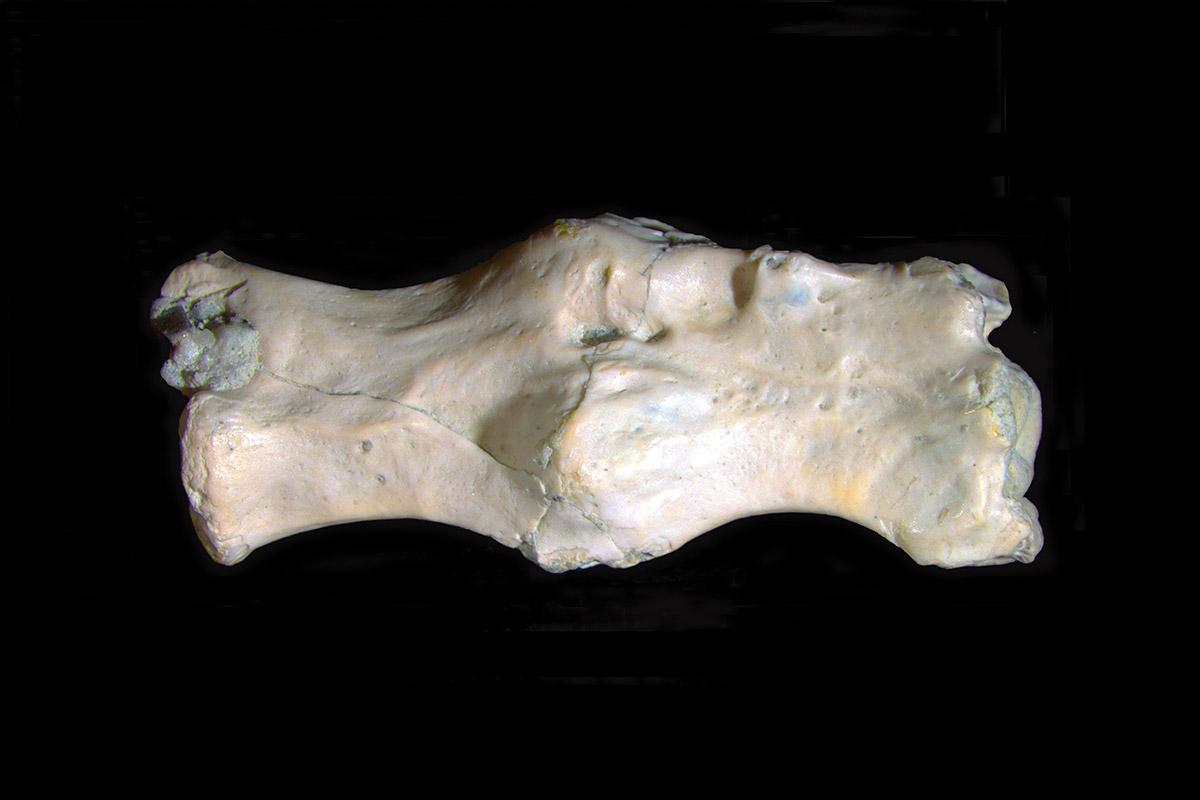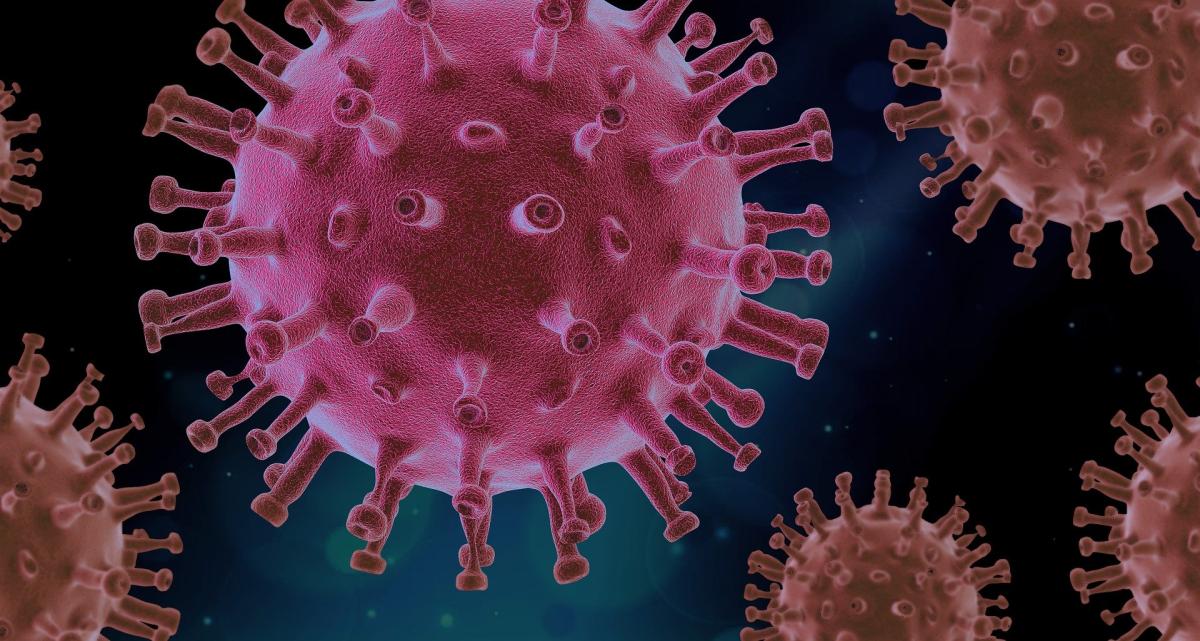How long have viruses been on earth? Where did they come from And what research does take place at the Museum für Naturkunde Berlin? In this article we take you on a journey into the world of viruses. In the second part you will learn more about viruses as pathogens – and what role they could have played in evolution.
Tiny and mean: What are viruses?
Viruses are infectious, independent, non-cellular, immobile particles. Inside, they contain genetic material. Their outer shell often takes the form of geometric bodies. Most are rod-shaped or spherical, some look like threads or cuboids. The outer shell consists of proteins (protein shell). They can also have a fat shell (lipid).
Viruses exist in unimaginable numbers – they are ten times more common than bacteria. That they do not attract attention is due to their small size. They are only visible with an electron microscope and are even a hundred times smaller than bacteria. Among the smallest pathogens are those of polio, among the largest the pox viruses. An influenza virus has an average size of 0.12 thousandths of a millimetre.
Are viruses living organisms?
Viruses are no living organisms, as they do not have their own reproduction apparatus (replication apparatus) or metabolism. They can only reproduce in living host cells because they depend on the metabolism of their host cells. Therefore they infest plants, animals and humans. There are also viruses that attack bacteria. These bacteriophages researched in medicine in order to make use of them.
Viruses lack basic functions of life such as metabolism, energy production, respiration and irritability. They embody the highest form of parasitism. Like real living beings, however, they have the ability to mutate. As an independent group they connect both worlds – the inanimate and animate nature – in an elusive way. Viruses can be compared to a program that is infiltrated into a cell and has the sole purpose of multiplying.
When did the first viruses appear and where did they come from?
We can only speculate about their origin. One theory is that they are genes that have become independent, i.e. scattered chromosome particles that can no longer be controlled by the host cells. Or they developed from bacteria by losing many of their cell building blocks. According to a third common hypothesis, the first existing cell in the history of the earth has already been infected with viruses. According to this hypothesis, they would have accompanied all evolutionary steps all the way to humans, constantly producing new forms.
The latest research results assume that viruses and bacteria are very close to each other. Gigaviruses have been discovered that are larger than bacteria and already possess building blocks to be able to carry out protein synthesis – which is actually reserved for bacteria as living organisms. Charles Darwin said that the beginning of life under today's conditions can no longer be traced.
The current state of research is: 4.5 billion years ago the earth was formed and 3.8 billion years ago the first biomolecule. How these riboenzymes came into being is still a matter of disagreement among scientists. Some researchers believe that life came from outer space.
These molecules had the ability to duplicate themselves by attaching new molecules to them and thus reproduce, so they made copies of themselves. Sometimes it didn't work right, there were mutations. Over time, they adapted themselves to new hosts. The researchers cannot directly detect such old viruses. The oldest evidence of bacteria can be found, for example, in so-called stromatolites, the oldest of which are 3.6 billion years old and were found in Australia. A direct proof of ancient viruses is not known. It is a common hypothesis how viruses could have originated.
Incidentally, the gigaviruses just mentioned were found a few years ago in north-eastern Siberia, 30 metres deep in permafrost, at an average temperature of minus 13 degrees Celsius – and they were "brought back to life" by a team of researchers after 30,000 years in the ice.
Researchers estimate today's number to be around 100 million virus types that occur wherever life exists – from the deep sea to Antarctica. It is assumed that viruses in the deep sea cause microorganisms to die and release carbon on a large scale. This carbon is then available to other organisms. Viruses can thus influence ecosystems.

Research at Museum für Naturkunde Berlin
The Museum für Naturkunde Berlin researches for nature. In one field of research, all types of diseases that manifest themselves in the skeleton of fossil vertebrates are studied. The so-called paleopathology opens a view into the depths of prehistoric times, asks questions about the evolutionary origin and history of diseases and seeks answers.
- One object of research was Tyrannosaurus rex Tristan Otto and other specimens from all over the world. Here you can learn more about the research cooperation.
- A team of paleontologists and physicians from Germany, Canada and the USA, with the participation of the Museum für Naturkunde Berlin, published a cancerous disease of Pappochelys rosinae. It is a specimen of the oldest turtle in the world from the Triassic period 240 million years ago.
- A lizard-like animal that lived in the Permian period 289 million years ago suffered from a disease of bone metabolism similar to Paget's disease in modern man. It was published in 2019 by researcher Yara Haridy, Museum für Naturkunde Berlin, and her cooperation partners and is by far the oldest known evidence of such a disease involving measles-like viruses.
- Did a tick (Ixodes succineus) enclosed in amber 49 million years ago already carry the pathogens (viruses, bacteria, protozoa) known today? A team of researchers led by Jason Dunlop, Museum für Naturkunde Berlin, published facts about this rare fossil tick.
- The research collection of the Museum für Naturkunde Berlin organizes the collection, storage and global availability of data from microfossils in deep-sea sediments, for example diatoms, in order to advance climate and ecosystem research.
- The Museum für Naturkunde Berlin investigates the development of the solar system, the effects of meteorite impacts and the evolution of the Earth from the magma ball to the blue planet. Modelling is carried out – actually the same method used today to calculate the current course of a pandemic.
